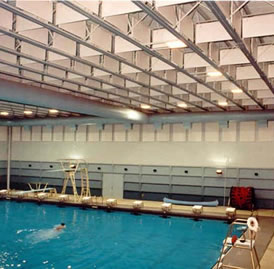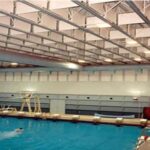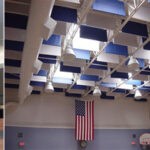During the design and construction phase of an indoor swimming pool planning should be done to control the ambient sound within the room. Most indoor swimming pool designs call for very hard reflective surfaces such as painted block walls and metal ceiling decks. Add to that the reflectiveness of the water and you will have problems with excessive reverberation ( echo ) within the room.
Indoor swimming pools can be a great asset to any community, providing a place for people to exercise, relax, and socialize. However, they can also be a source of noise pollution. To ensure that your indoor swimming pool is as quiet as possible, there are a few things you can do. First, make sure that the walls and ceiling are well-insulated. This will help to reduce the amount of noise that is able to escape from the pool area. Second, consider using sound-dampening materials on any exposed surfaces. These materials can absorb sound waves, preventing them from echoing inside the pool area. Finally, Install acoustical panels around the perimeter of the pool. These panels will help to deflect noise away from the pool, keeping the noise level down. By taking these steps, you can help to ensure that your indoor swimming pool is a peaceful oasis for all who use it.
The goal during the design and construction phase of a swimming pool should be to add sound-absorbing materials to reduce the reverberation (echo) in the room. Materials such as acoustical baffles work well to reduce the reverberation within the room and add color to the walls and ceilings within the indoor swimming pool.
Materials used to reduce noise levels in swimming pools include:
- Hanging baffles and banners
- Acoustical foams
- wall panels

Swimming Pools Noise Control & Soundproofing Solutions
Clean rooms & labs Noise Control & Soundproofing Solutions. Call us today at 407-559-7127
Question? Fill out our contact form for more information or a call back!




